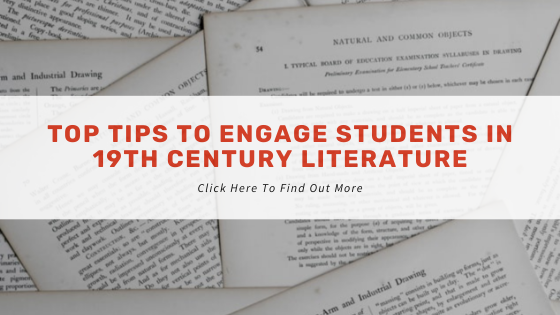Engaging students in 19th-century literature is essential for effective GCSE learning as it improves their writing skills, thus increasing the chances of them achieving high grades by the end of year 11. This blog will provide teachers with top tips to help students engage themselves in 19th-century novels, whilst helping them become more excited about their English lessons too.
-
Know Your Students
It is important that the teacher knows their students, what they enjoy reading and what they dislike. Investigate all the novels that you think the students will enjoy and then have a discussion with the class to see which ones they would prefer to learn. This can be decided through a class vote or through the teacher deciding after selecting the most popular books.
However, there are more aspects that may have never even been considered, such as, the gender split of a class. If the class is highly populated with boys, they might find that a novel such as Pride and Prejudice may not be that popular, as it is associated highly with a female audience. Therefore, it is imperative to find texts that cover everyone’s interests. Great Expectations or A Christmas Carol are both classics that appeal to a broad audience.
-
Recognise Strengths
It is extremely important that the teacher is knowledgeable and enthusiastic about nineteenth-century novels so that the text is taught effectively. High engagement with the text from the teacher has shown to massively benefit grade results.
If the teacher does not enjoy the novel, it is highly likely that the students will mirror this. Similarly, choosing a novel that the teacher does not know well will produce ineffective learning and be time-consuming, as it increases the time needed to plan a lesson, something a teacher has very little of.
-
Support Reading With Additional Visual Aids
Without a doubt, teachers will have students in the classroom who learn better visually. Therefore, watching a film while reading the book will not only aid their understanding of the characters and the initial storyline but will also open opportunities to discuss the differences between the film’s portrayal and their interpretation.
Even something as simple as finding a 10-minute video clip during a lesson will also keep a reluctant reader engaged and create a more enjoyable experience.
-
Don’t Tackle The Novel Alone
Let’s be truthful, 19-century novels can be a daunting thing; their complexity and length may seem a bit too much of a challenge for some students. Even though the students must cover the whole novel in the main exam, the lessons are the perfect opportunity to be able to break up the work. For example, the class could be split into groups and assigned characters from a certain chapter for discussion, this can then be reported back to the class. This is also an easy way to provide revision resources that every student can use.
-
Add Creativeness To Your Lessons
Interactive activities are a great way to break up the reading-heavy lessons and helps to inject some essential fun and creativity into the lessons.
Here are some activities you could include:
● Card sorting games that relate to the novel.
● Create a colourful storyboard (that is also great for a revision resource, especially for visual learners).
● Quizzes.
These interactive tasks will help to aid your students’ knowledge of the book, whilst ensuring that they are looking forward to all their English lessons!
If you are interested in checking out some of the best 19th-century novels for your classroom, then make sure to check out our collection of classic books by clicking here.

